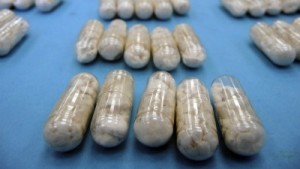 Police departments, lawmakers and even the governor have made combatting drug overdoses a major point of emphasis over the last few years. Many law enforcement agencies are training their officers in overdose recognition and equipping them with overdose prevention drugs. Police are now responding to the scene of a possible overdose with the mindset that their first call of duty could be saving a life rather than making an arrest. Lawmakers are tying to do their part as well by creating legislation aimed at punishing drug dealers whose product causes a death, and attempting to protect those who offer aid to overdose victims. The governor has always taken a hardline stance against heroin, highlighted by his recent declaration that opioid use is now in an official state of emergency warranting an additional $50 million in resources. Numerous citizen based community organizations have also joined forces with the government in this battle, but despite their best efforts the overdose numbers are heading in the wrong direction.
Police departments, lawmakers and even the governor have made combatting drug overdoses a major point of emphasis over the last few years. Many law enforcement agencies are training their officers in overdose recognition and equipping them with overdose prevention drugs. Police are now responding to the scene of a possible overdose with the mindset that their first call of duty could be saving a life rather than making an arrest. Lawmakers are tying to do their part as well by creating legislation aimed at punishing drug dealers whose product causes a death, and attempting to protect those who offer aid to overdose victims. The governor has always taken a hardline stance against heroin, highlighted by his recent declaration that opioid use is now in an official state of emergency warranting an additional $50 million in resources. Numerous citizen based community organizations have also joined forces with the government in this battle, but despite their best efforts the overdose numbers are heading in the wrong direction.
According to data recently released by the State Department of Health and Mental Hygiene the number of statewide deadly overdoses increased by a whopping 66% from 2015 to 2016. This puts last year’s total number of deaths at 2,089, which is the highest ever and triple the amount from 2010. About one third of these deaths occurred in Baltimore City, with the majority of the others occurring in Baltimore and Anne Arundel counties. Prince George’s County and Montgomery County rounded out the top five of this unfortunate statistic. Only two jurisdictions, Cecil County and St. Mary’s County reported declines in the number of deadly overdoses from 2015 to 2016.
The majority of victims were found with multiple drugs in their system, and not surprisingly the most common drugs present in the deceased were heroin and fentanyl. These two opioids have been public enemy number one in both urban and rural areas in the region for the last couple of years. The rise of fentanyl has been well documented but despite the awareness there are no signs that it even remotely close to being controlled. This deadly synthetic opioid, which is often mixed with or sold as heroin, contributed to over 1,100 Maryland deaths in 2016, up from 350 in 2015. Alcohol, which continues to get a pass in due to its deep roots in American culture, contributed to around 30% of the deaths and cocaine to around a quarter. Prescription opioids such as morphine and oxycodone that were once a leading cause of overdoses were just the fourth leading cause last year in the state.
Government officials and community groups are beyond a state of simple concern over these statistics but thus far have not been able to come up with a viable solution. Those with a deeper understanding of addiction will continue to advocate for a treatment and education based approach, while law enforcement will continue down the impossible task of eliminating the supply. One positive step came on June 1 when the overdose prevention drug naloxone became available over the counter. The hope is that an increased number of police officers and even citizen bystanders will be willing and able to administer this life saving drug should it become cheaper and more accessable.
The Blog will continue to follow the opioid epidemic in Maryland and other areas of the country, and may post a follow up article if something newsworthy breaks. If you or a loved one has a criminal case involving drugs or alcohol contact Benjamin Herbst anytime for a free consultation. Benjamin has handled hundreds of drug cases including possession with intent to distribute and manufacturing, and offers flexible payment plans.
Resources
Deaths from drug, alcohol overdoses skyrocket in Maryland, baltimoresun.com.
 Criminal Defense Lawyer Blog
Criminal Defense Lawyer Blog

